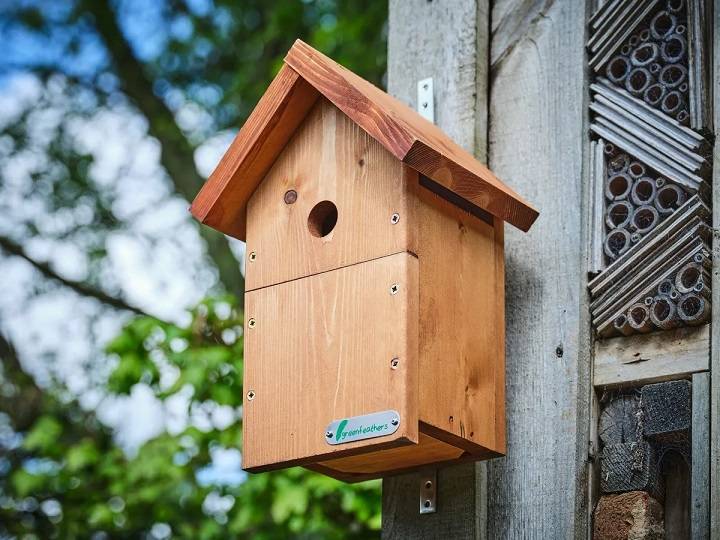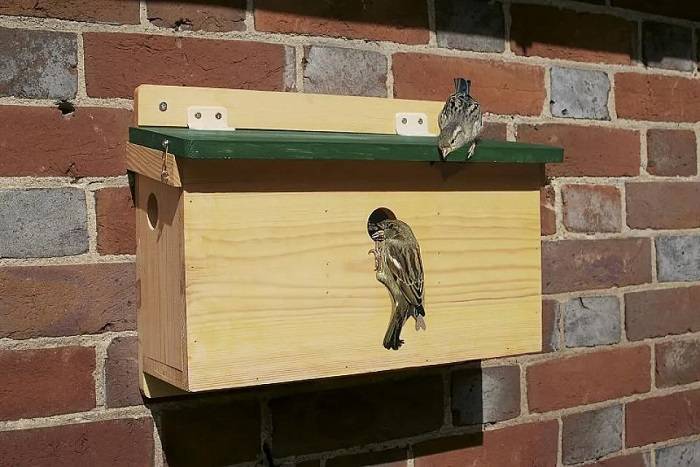Wooden bird boxes, also known as birdhouses or nesting boxes, serve as essential shelters for various bird species during the breeding season. These structures provide birds with safe and secure places to build nests, lay eggs, and raise their young. In this comprehensive guide, we’ll explore everything you need to know about wooden bird boxes, including their benefits, types, placement, construction, maintenance, and tips for attracting nesting birds to your garden.
Understanding Wooden Bird Boxes

Benefits of Bird Boxes:
- Wooden bird boxes offer numerous benefits to both birds and bird enthusiasts. They provide crucial nesting sites, particularly in urban and suburban environments where natural nesting sites are limited. Bird boxes also contribute to conservation efforts by supporting declining bird populations and promoting biodiversity in residential areas.
Types of Bird Boxes:
- Bird boxes come in various shapes, sizes, and designs, each catering to the specific needs and preferences of different bird species. Common types include nest boxes for cavity-nesting birds, roosting boxes for winter shelter, and specialized boxes for species such as owls, woodpeckers, and swifts.
Choosing and Placing Bird Boxes
Species Selection:
- Before selecting a bird box, research the bird species native to your area and choose boxes designed to attract those species. Consider the habitat preferences, nesting habits, and entrance hole sizes favored by target birds to increase the likelihood of occupancy.
Placement Considerations:
- Proper placement is critical for the success of bird boxes. Install boxes at the appropriate height, facing the correct direction, and away from potential hazards such as predators, strong winds, and direct sunlight. Ensure adequate spacing between boxes to prevent territorial conflicts among nesting birds.
Building and Installing Bird Boxes
Materials and Construction:
- When building bird boxes, choose durable and weather-resistant materials such as untreated wood, plywood, or recycled plastic. Follow standardized dimensions and construction guidelines for optimal nesting success. Pay attention to ventilation, drainage, and predator guards to enhance box functionality and safety.
Installation Tips:
- Securely mount bird boxes to sturdy posts, trees, or buildings using appropriate hardware to prevent displacement or damage. Position boxes in secluded and quiet locations near suitable foraging areas and natural habitat features preferred by target bird species.
Maintaining Bird Boxes
Regular Inspections:
- Conduct routine inspections of bird boxes throughout the nesting season to monitor occupancy, assess nest condition, and address any maintenance needs. Check for signs of damage, deterioration, or pest infestation, and take prompt action to remedy issues and ensure box integrity.
Cleaning and Sanitization:
- After each nesting cycle, thoroughly clean and sanitize bird boxes to remove old nesting material, debris, and parasites. Use a mild disinfectant solution and allow the box to dry completely before reinstalling. Regular cleaning promotes nesting success and reduces the risk of disease transmission.
Attracting Nesting Birds
Habitat Enhancement:
- Enhance your garden or outdoor space to attract nesting birds by incorporating native plants, water features, and supplementary food sources. Create diverse and interconnected habitats that offer suitable nesting sites, foraging opportunities, and shelter from predators.
Selective Nest Box Placement:
- Strategically place bird boxes to target specific bird species and maximize occupancy rates. Experiment with box placement, orientation, and habitat features to determine the most attractive locations for nesting birds in your area.
Wooden Bird Boxe
Nesting Observations:
- Monitor bird boxes regularly to observe nesting behaviors, egg laying, incubation, and chick rearing. Use binoculars or wildlife cameras to observe birds from a distance without causing disturbance, and document your observations to track nesting success and species diversity.
Educational Opportunities:
- Share your passion for birds and bird box monitoring with friends, family, and community members through educational outreach activities. Organize birdwatching events, workshops, or citizen science projects to raise awareness about the importance of bird conservation and habitat preservation.
Related Post:
North American Birds With Blue Eggs: Surprising Reasons
North American Orange Birds: Ten Orange Birds In North America
American Robin Bird House: Top-to-Bottom Details
Wooden bird boxes play a vital role in supporting avian families and promoting biodiversity in urban and suburban environments. By providing safe and secure nesting sites, bird enthusiasts can contribute to the conservation of native bird species while enjoying the beauty and wonder of backyard birdwatching. Whether you’re a novice or experienced birder, building and maintaining bird boxes offers endless opportunities to connect with nature and foster a deeper appreciation for the fascinating world of birds.



